People have been creating mandalas for thousands of years. The earliest evidence of mandala art dates to the first century B.C. Nowadays, mandala designs can be found in countless forms‒everything from t-shirts to street art murals, from tattoos to cake decorations, from garden pebbles to dinnerware. The word mandala comes from Sanskrit and means “circle”. Indeed, the circle is what gives the mandala its signature symmetry‒that perfect repetition of design elements and the radiating pattern flow. This balance of visual elements has a universal appeal.
In her book Joyful, author Ingrid Fetell Lee notes that “A love of symmetry is one of the best-studied human aesthetic preferences. … One reason we love symmetry may be that it is an outward symbol of inner harmony.” Check out the posts Joy Spotting and My Top 3 Nonfiction Reads for 2018 to learn more about how the seemingly mundane spaces and objects we interact with every day have surprising and powerful effects on our mood.
Mandalas have come to symbolize unity and harmony. In some cultures, the mandala also represents cosmic and psychic order and is used in meditation practices and sacred rites. While in other cultures, mandalas are simply treasured for their joyful beauty.
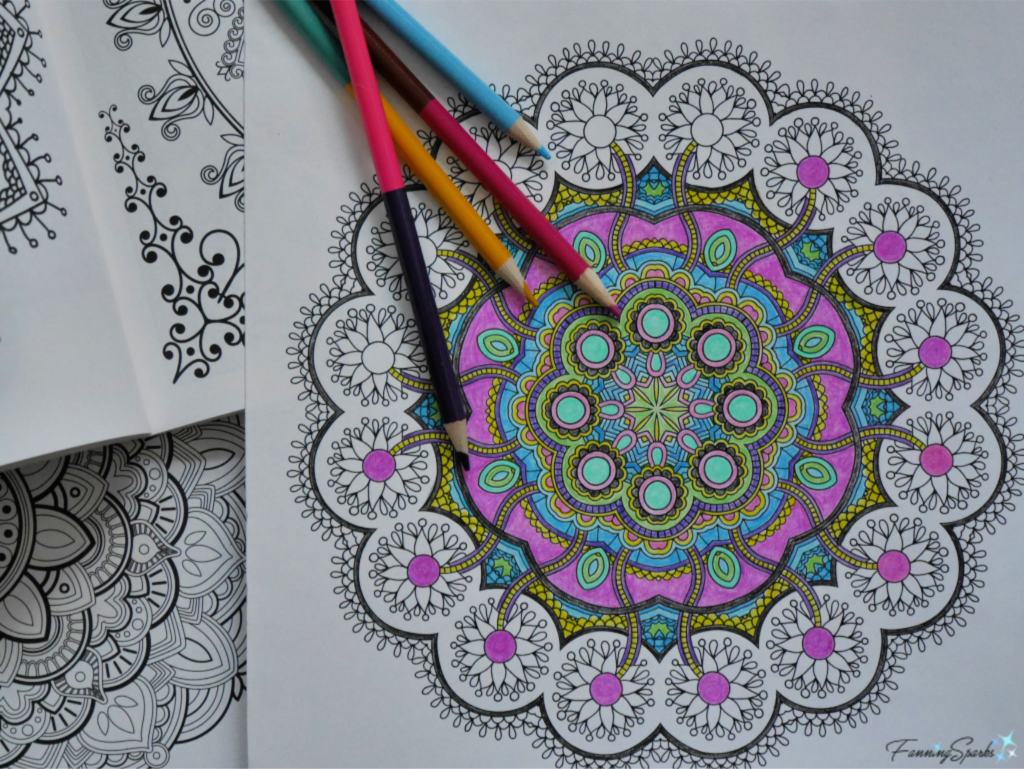
As I started to consider designs for my latest mosaic project, the mandala’s symmetry sparked an idea. I wanted to replace the cheap, boring metal frame from an oval mirror we had in our Half Bathroom. The mirror itself has a pleasing shape and fits perfectly above the pedestal sink. If you follow this blog, you’ll know I’ve been on a mosaic kick lately and had some success making mosaic mirror frames for our Master Bathroom (see Pair of Mosaic Mirrors Completed).
I wondered if it would be possible to create a mandala-like design out of mosaic to frame the oval mirror. The challenge was figuring out how to apply a round design to an oval shape. In a mandala’s circular design, the curve is consistent and all the elements are identical around the circle. On an oval, however, the curve is inconsistent and the shape of the elements has to be adjusted to match that curve. Since I planned to use stained glass for my mirror frame, I also had to ensure the design elements were self-contained and of a manageable size. There are numerous online tutorials and videos on designing mandalas which I used as a starting point. After some experimentation, I found a way to adapt the standard mandala-making techniques to my oval shape. This is the finished mandala-inspired mirror frame.
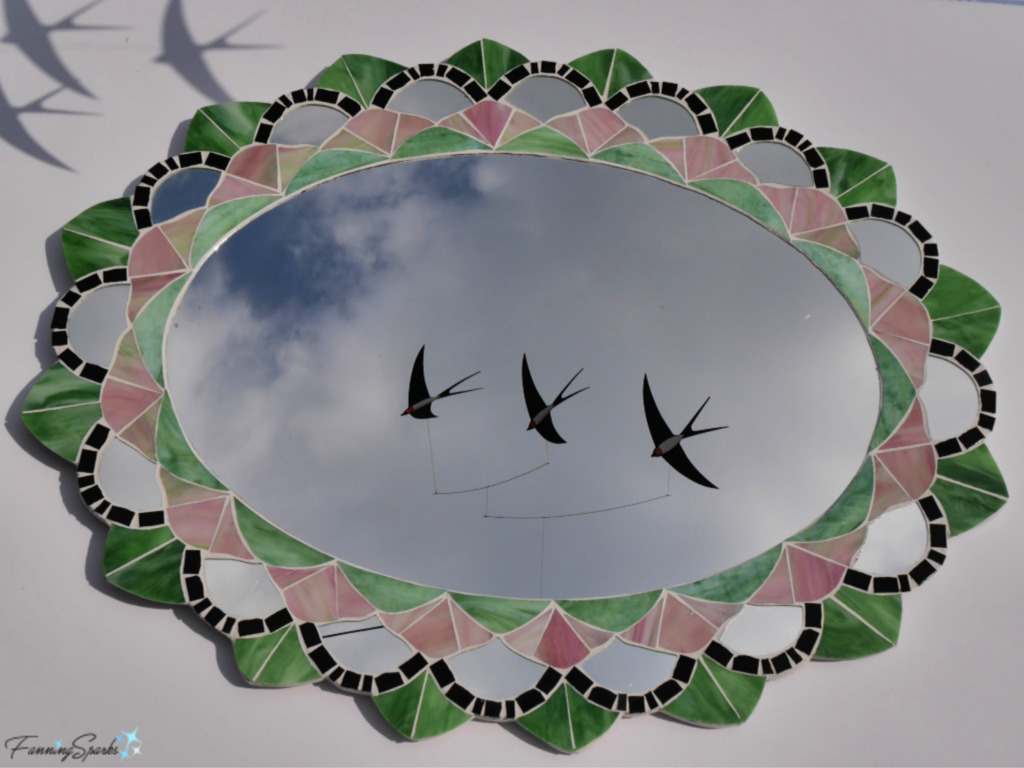
Here’s how I created the design. The first step was to remove the old frame from the mirror and determine the size of the new frame. Our Half Bathroom is small so there was wasn’t much clearance around the mirror. I decided to make the new frame 4 ½” wide. Using a piece of blank paper slightly larger than the outside of the desired mirror frame, I traced around the oval mirror in the center of the paper.
Note my approach is admittedly old school‒I used paper, pencil and scissors to create this design. I’m sure professional designers would create this design more easily using some type of design software like Adobe Draw.
Next I folded and creased the paper to divide the oval into 16 equal slices. The first fold marked the horizontal center of the oval. The second fold marked the vertical center of the oval. And so on until the oval was folded into sixteenths. Then I unfolded the paper and used a pencil and ruler to clearly mark the crease lines all the way to the edges of the paper. I divided the slices one last time, but this time by measuring and marking instead of folding, which resulted in 32 equal slices.
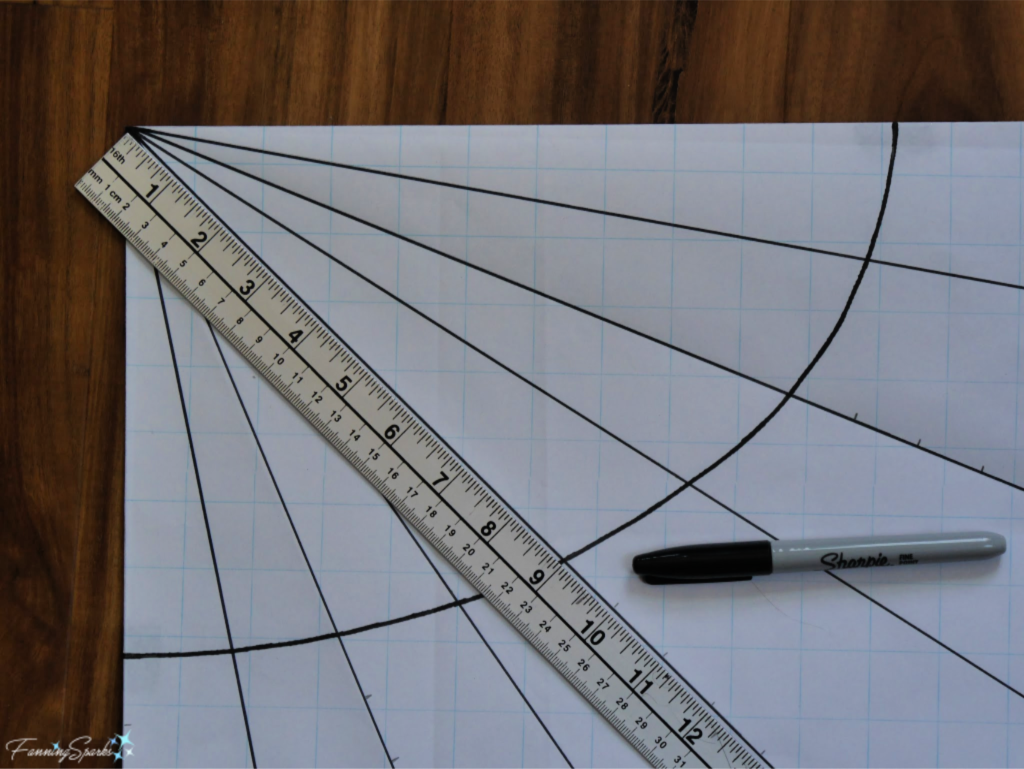
To mark the outside edge of the new frame, I measured 4 ½” from the oval along each line. Then the real fun began! I printed a few mandala designs I’d found online for inspiration. I also found a simple black and white mandala design in a coloring book. I marked it up into slices and used it for reference in creating my own design. My design was drawn on only one quarter of the oval. I built it up, one round at a time, as I sketched and repeated small shapes. Each shape covers two slices as shown in the below photo. I found it easiest to use paper to sketch, mirror and cut the shapes. 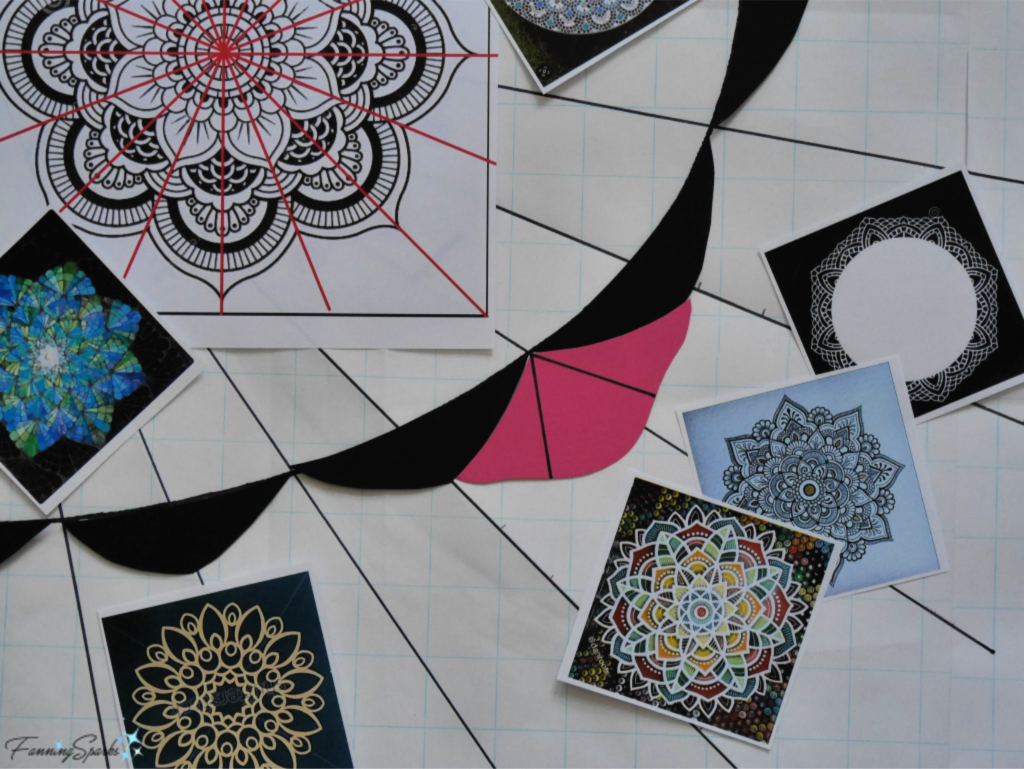
All the pieces were numbered and traced onto the paper.
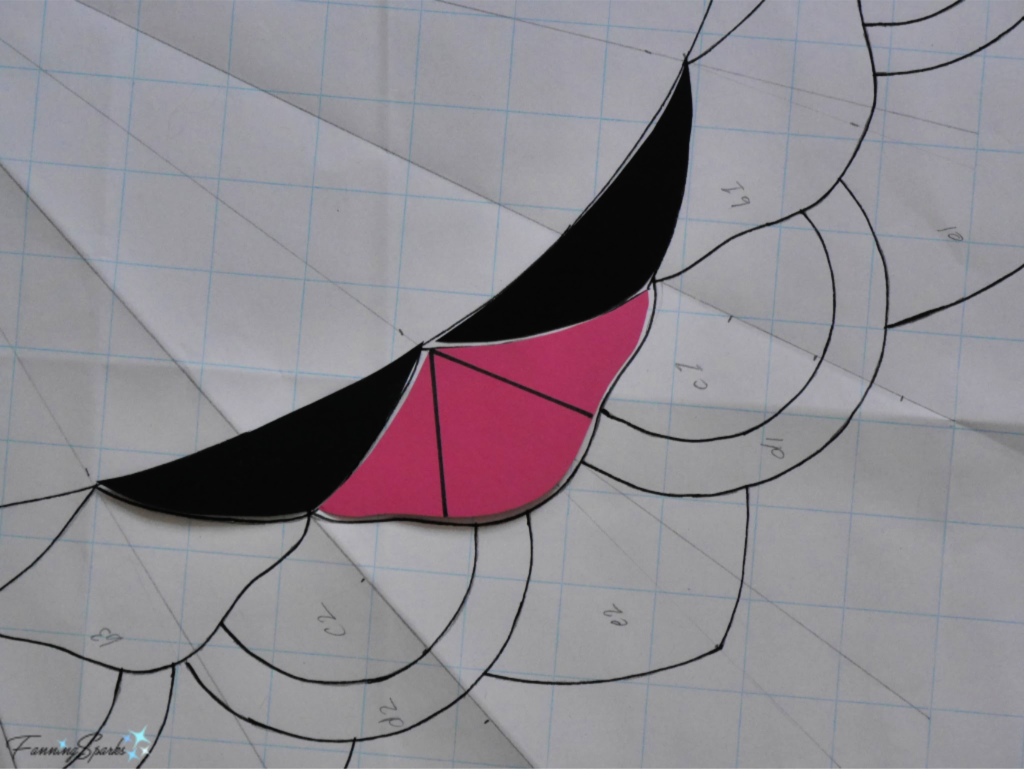
After I was happy with the outcome, I used a copier to make 3 copies of the quarter-oval design‒2 copies were mirror images and 1 was an exact replica. I had to tinker with the copies, cutting and taping them together, because the copy paper was so much smaller than my mirror frame. In hindsight, it would have been much easier to simply have a copy shop make the copies. But I persevered and it worked out in the end. Here’s how my full pattern looked.
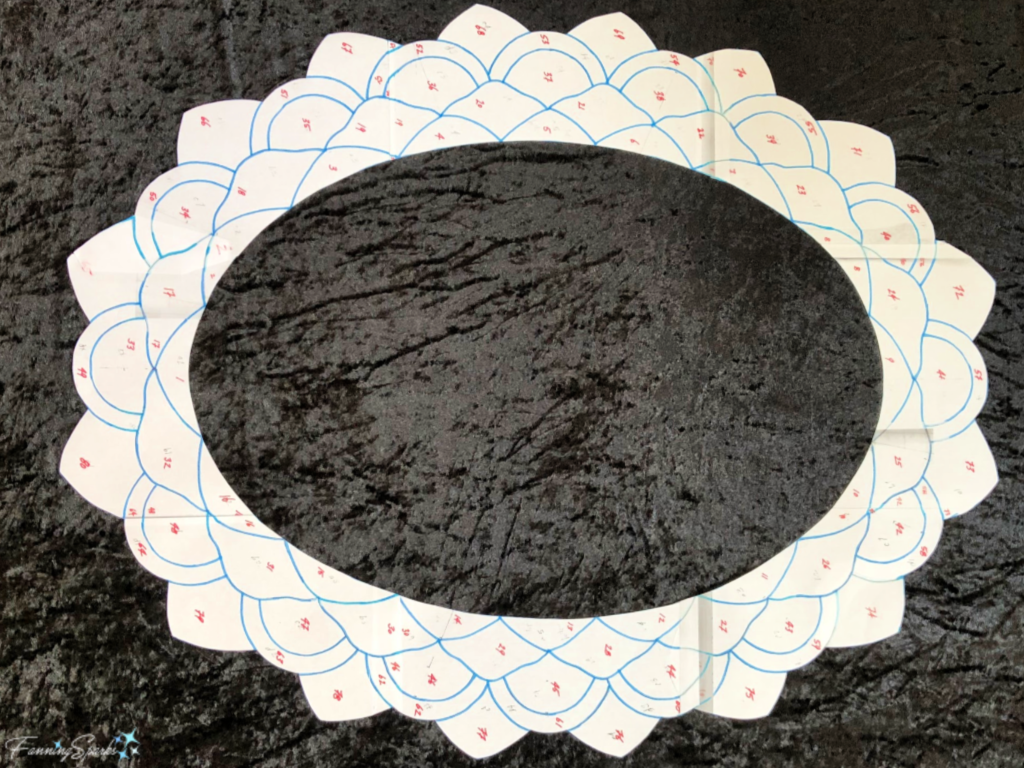
Knowing I’d be making the mosaic from stained glass, I made a second version of the full design and cut it into pattern pieces. The cut lines were drawn wide and carefully removed to ensure enough space for grout between the pieces.
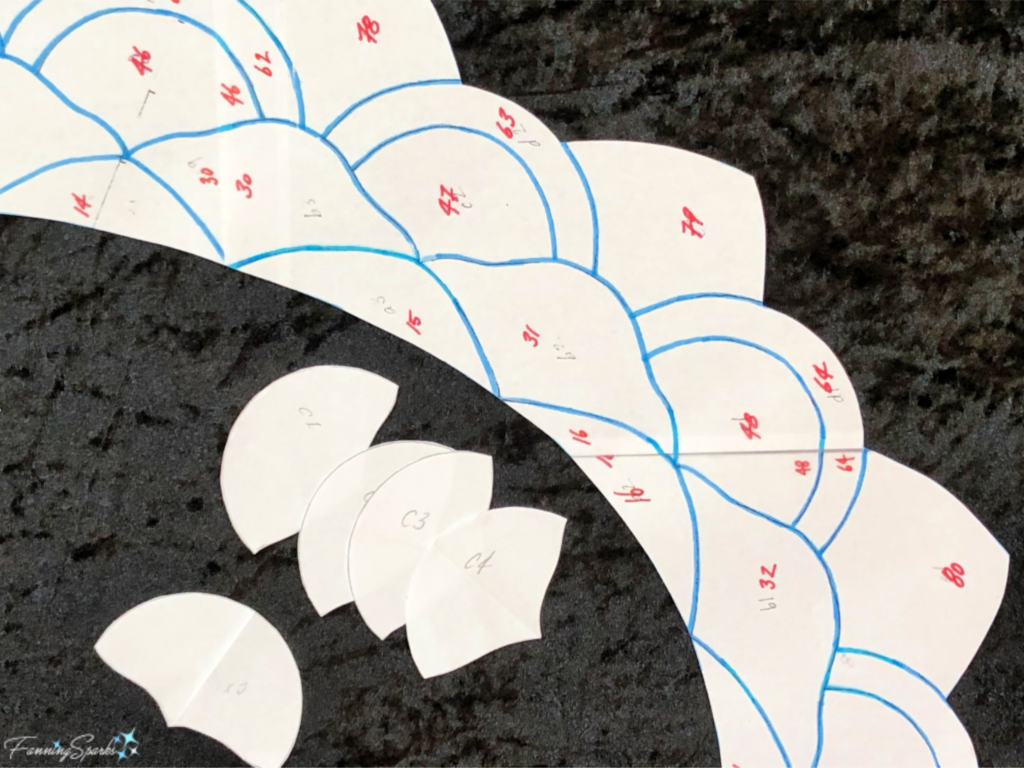
A backing for the new mirror frame was made by tracing the outline of the pattern onto a piece of MDF and cutting it to shape. Here is the backing with the oval mirror and the original section of the pattern.
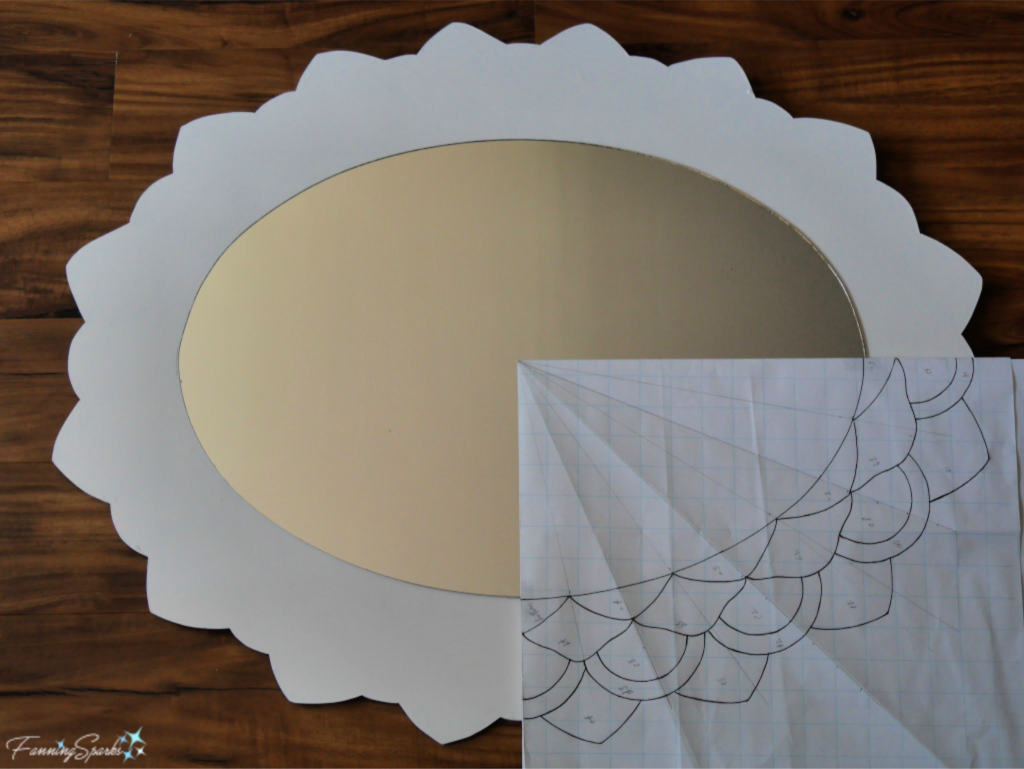
Then it was time to select the glass for the design‒my favorite step in the process!
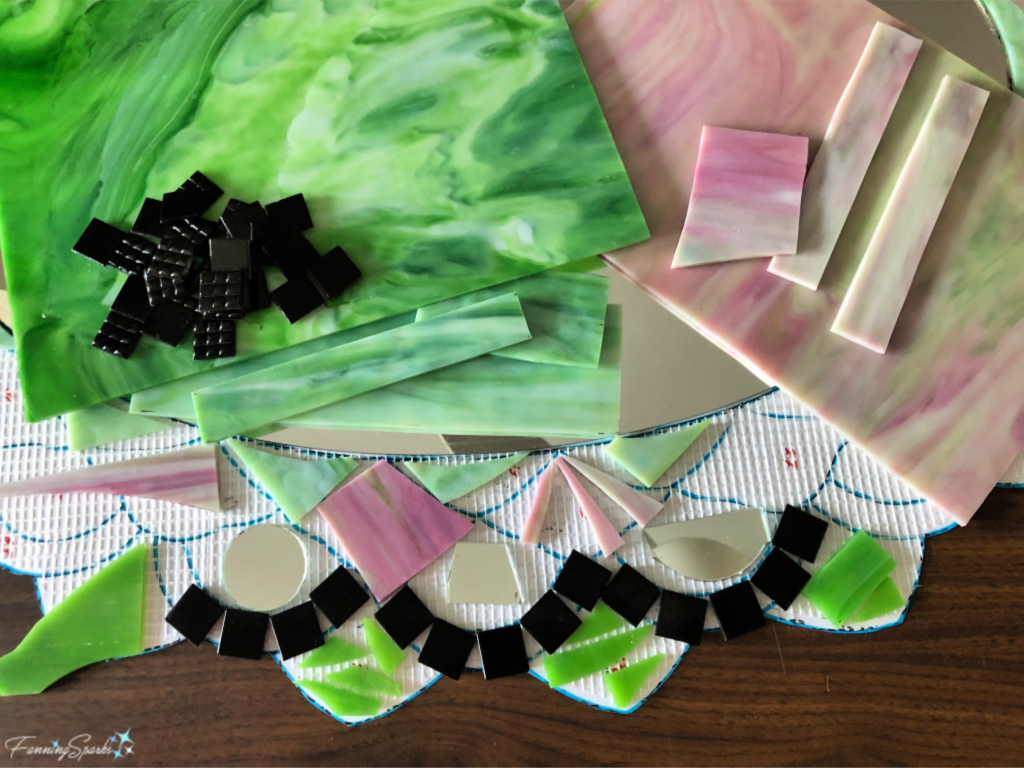
The individual pattern pieces were used to cut each piece of glass. Some thought goes into optimizing the cuts so I don’t waste glass. Here’s a section ready to cut.
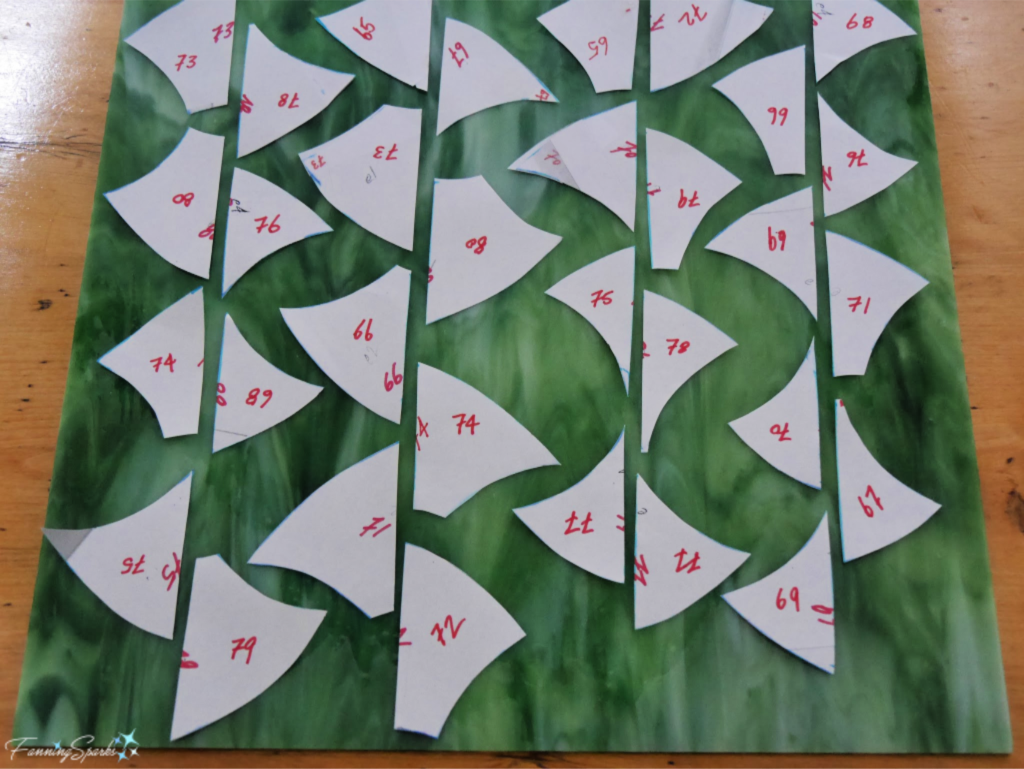
In this photo, the glass pieces are starting to build up around the oval mirror and the mandala-inspired design has become visible.
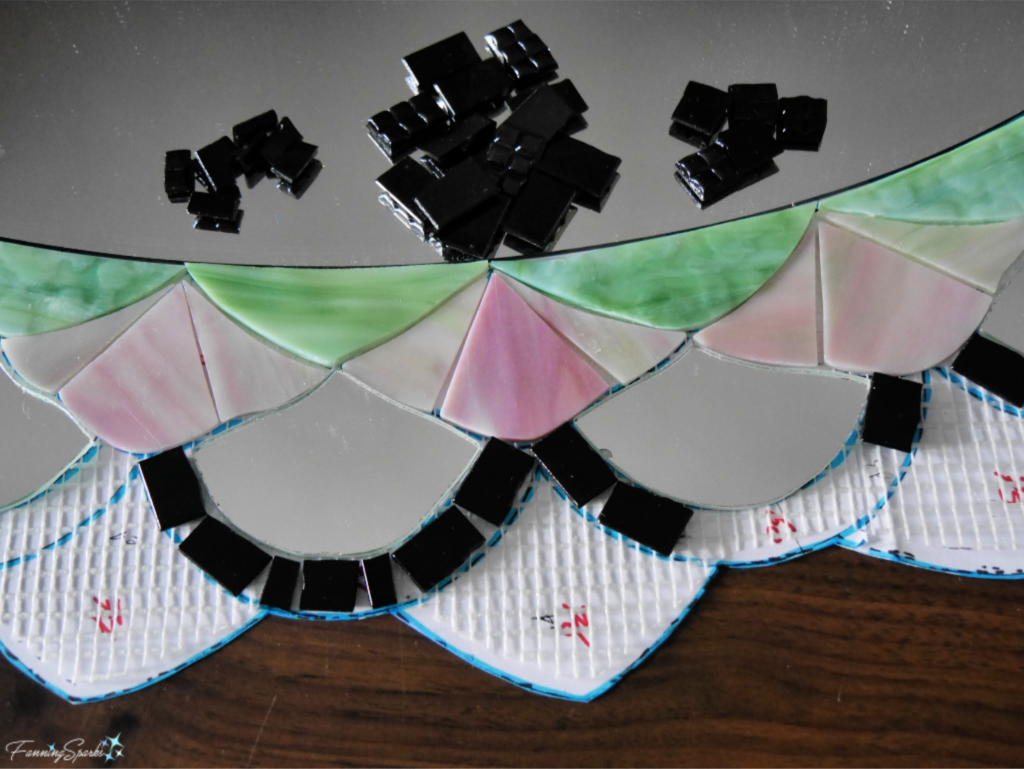
The rest of the process is pretty much the same as explained in Pair of Mosaic Mirrors Completed. And, finally, here’s how our new mandala-inspired oval mosaic mirror looks in the Half Bathroom. It adds some much-needed life and energy to this space–so much so that I really need to upgrade the rest of the room. And so it goes…
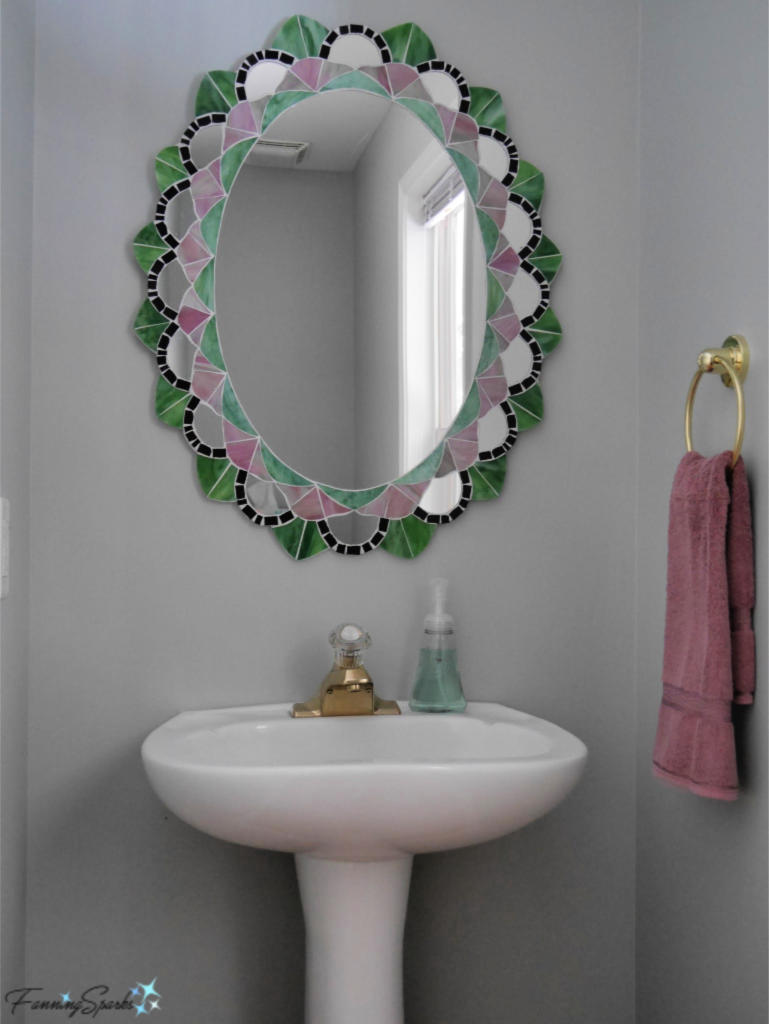
More Info
To learn more about mosaics, check out my posts Learning from the Ancient Masters and Gaudi’s Trencadis Mosaics. To see other mosaic projects I’ve taken on in the last few months, see Pair of Mosaic Mirrors Completed and DIY Turkish Mosaic Candle Holder Tutorial.
Check out the posts Joy Spotting and My Top 3 Nonfiction Reads for 2018 to learn more about Ingrid Fetell Lee’s book Joyful.
Today’s Takeaways
1. Traditional designs and classic motifs can inspire contemporary art making.
2. Consider re-purposing existing accessories or home decor items.
3. When uncertain how to approach a design or technique, keep it simple and just experiment.


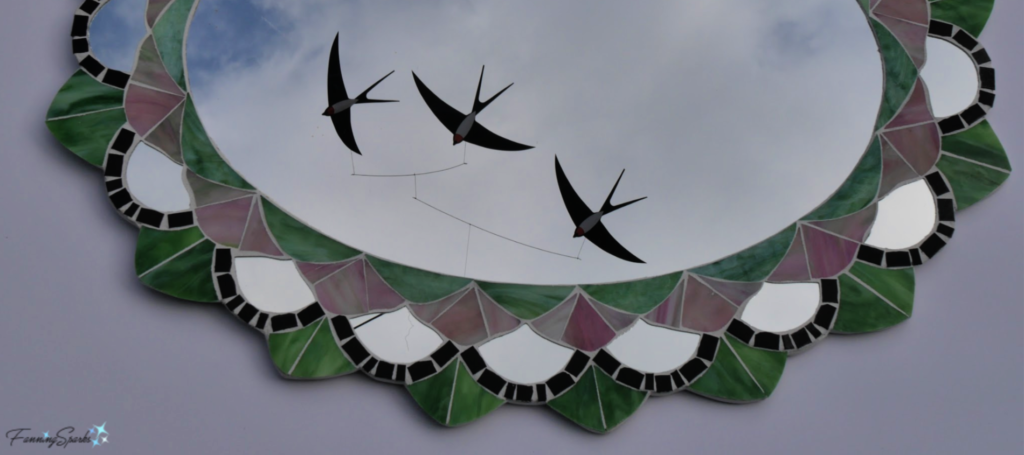


Comments are closed.